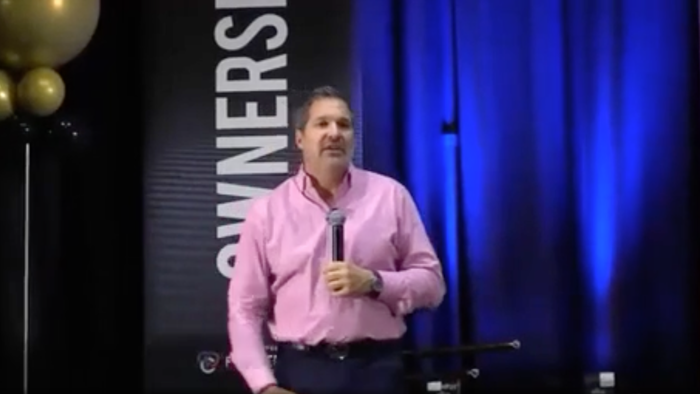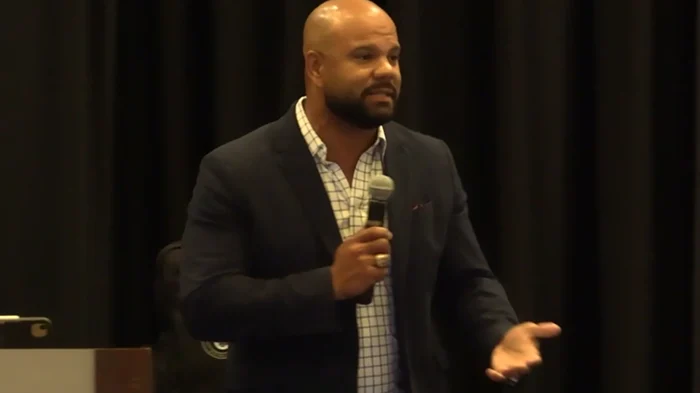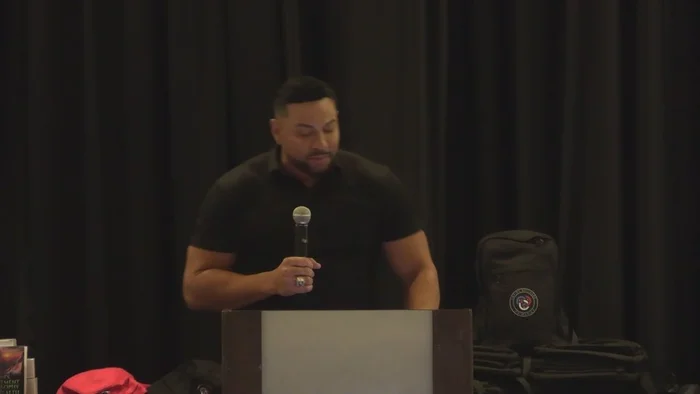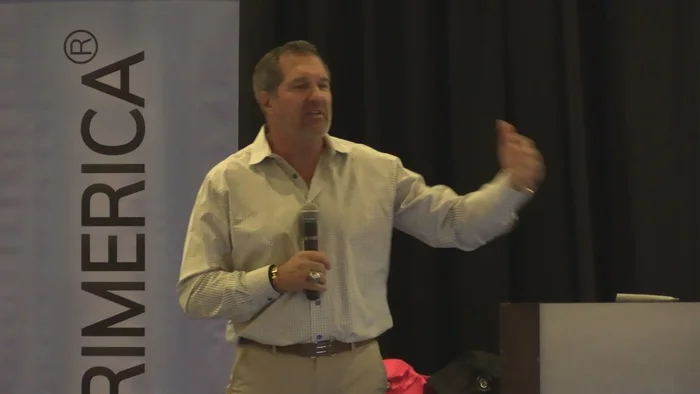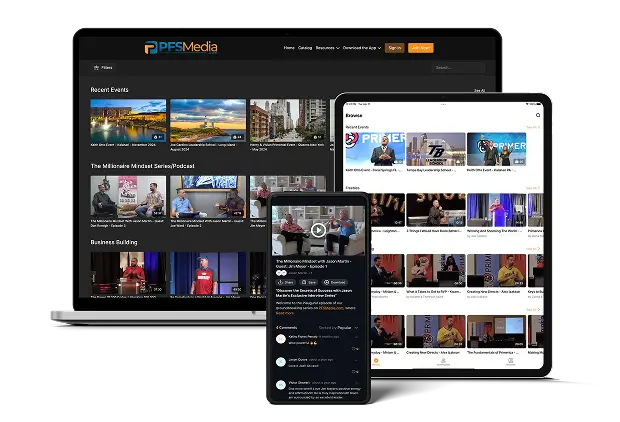Ever feel like you’re missing out on financial freedom because you don’t know where to start with investments? You’re not alone. Many people struggle with understanding the true value of investing, especially when it comes to maximizing their potential with tools like Roth IRAs. The confusion often leads to missed opportunities and a lack of financial independence. But what if you could change that? What if you could unlock the secrets to building wealth and securing your future with just a few simple steps? That’s exactly what Keith Otto dives into in this powerful session. He breaks down the essentials of investing in Roth IRAs, showing you how to turn small contributions into significant financial gains over time. It’s eye-opening, practical, and exactly what you need to start making smarter financial decisions today. Don’t miss out on this must-see moment that could transform your financial future. Watch the video below and discover the strategies that can help you achieve the financial freedom you’ve been dreaming of.
Video Transcription:
With the players.
I think it’s an awesome tool for us to know when you look at all the different resources that we have and how we get paid, I want to go through some fundamentals on investing.
I think one of the things that what does Primerica do is we educate people on how to get financially independent, right? When it’s all said and done, the reason that people don’t save money or invest money is they don’t have any extra money or they’re not educated on the value of basically that cost of loss, right or wrong.
And so when you look at when we talk about the rule of 72 and we show that 6-3-6 12%, it’s not the 3% 6%, or 12%.
It’s the two or $3 million that people are losing by not investing properly.
So that cost of loss is huge.
And so when you look at the value, you want to max your compensation out.
And Enter used to talk about if you don’t have a securities license, then you’re one sided, right? It’s like getting into a fight with one arm tied behind your back.
You need to have the value of the securities license.
90% of people that get securities license maintain their life license on a part time or spare time basis.
So what happens is it builds residual income.
One of the craziest things in my business, in our business early on, were in this business four years.
Bunch of stuff we struggle with.
Four years, never spoke in front of a room because I was afraid to speak in front of people.
But four years without a securities license, and I think back, right? We’ve got billions of dollars of assets under management that we have a financial interest in, and yet four years, we had no securities license.
Now we’ve got people.
I met people at the breakfast today who was at the VIP breakfast today.
Awesome.
Congratulations.
And I apologize.
There was a few names that were not on the list, so I apologize.
Your leaders were there, but I apologize I didn’t have them on the list.
But if you think about it, the value of a securities license is huge, right? So I met people there at breakfast this morning that have been with us since January, introduced Aven.
This guy got recruited.
He got his license in January, and they had a Diplomat shirt on.
I said, oh, you guys won the Diplomat? He goes, yeah, we won the Diplomat.
We got licensed January.
We got our six, our 63, our 26.
I want to kick him in the pills.
I’m like, how awesome is that? Four or five months later, fully securities licensed.
But the value that we provide let me share this with you, okay? Every single person needs an IRA.
That’s my opinion.
Some people go, oh, this guy makes a lot of money, or she makes a lot of money.
I do pretty good.
I have an IRA.
Now, I don’t qualify for a Roth IRA based on her income.
But anytime I can put money away, tax deferred, and if somebody was to sue you or, God forbid, something happens, that money’s kind of protected.
So the thing that you got to look at is the value that we provide.
A Roth IRA, in my opinion, is a great tool because it’s tax free.
It’s tax free.
And you could use a mutual fund value, which is professional money management, or annuity, which is professional money management.
But you can get tax free money in a Roth IRA.
So let me go through some stuff with you, if you could put that up for me.
This is a presentation I stole.
I didn’t steal.
I borrowed from Brian Collins, who’s a big securities producer.
We were at a Franklin Templeton seminar last month, and he went through this with me.
I think it’s phenomenal.
So I want to go through it with you guys today.
There’s Brian Collins that will say by Keith Oto next presentation.
Think about this for a second.
Why? To invest in a Roth IRA.
So when you look at the value of the Roth IRA, for those of you that are in the back that can’t see it, I had the screens pulled down.
I apologize.
They were not up for you guys yesterday.
But when you look at contributions are made after tax dollars, non deductible, there’s a lot of value in having a Roth IRA.
But the biggest value is it’s tax free money.
There’s also ways you could pull money out, right? So why am I sharing this? I’m not sharing this with you guys because, oh, I got to go talk to my clients about this.
You understand most of us in this room don’t have an IRA, right? One out of four people in the United States has an IRA.
And I think, like, less than 10% of people max their IRA out.
Every human being that you come in contact with needs an investment.
This is the fact, right? One of the things that we do is we educate people on how to become debt free and financially independent.
Not everybody you meet is going to have debt.
Depends on where you live.
Some of us call it debt, okay? But not everybody’s got debt.
Not everybody has a need for life insurance, because not everybody maybe has that financial responsibility.
Every human being that comes to your business briefing that drives past you in a car if they’re two days old or 102 years old, everybody needs an investment.
And so the value that we provide is huge.
I’m not saying you have to become an investment guru, but you want to have a mentality that you’ve got to get more securities, licensed, reps, because the value of what we do, it’s by term and invest the difference, the value of what we do.
So forget about what we do for clients let’s talk to us today as leaders.
If you qualify for a Roth IRA, then damn it, max that thing out.
Put yourself in a position.
If you’re over 50, you could put an extra $1,000 if you’re an old bastard like us.
But if you think about it, the value of the IRA, think about that.
So this is an example.
If you could see this.
Do I have a clicker a pointer on this thing? You bet your ass I do.
Right here.
So if you look at this right here, it says 30 years.
So this gives an example.
If you max out your IRA, which is $541 a month.
So now I’m going to pretend for a minute everybody in here securities licensed.
I’m going to show you how to get financially dependent.
Just setting up one client a week.
So $541 a month will max out a Roth IRA.
Holy shoot.
Hold on a second.
We’ll max out a Roth IRA.
It shows right here.
If you do $541 a month, $541 a month and you put that in for the next 30 years so that money total investment they’ll put in is 194,000.
I’m sorry, I’m still hungover.
194,000, right here is what their contributions are.
In the next 30 years, it will accumulate $1.2 million just by putting now picture this.
Picture you and I sitting down with a client in their sixty s like Roy sitting down with a client, and they got an extra million dollars sitting in a Roth IRA, tax free.
Means when they pull it out, it’s tax free.
See, most people don’t care about taxes right now.
And all of a sudden, I’m making money.
I’m making money.
All of a sudden you start making money, and then all of a sudden, for the next 30 years, you worry about, how am I going to save money in taxes, right? Pulling out an extra million dollars tax free.
So picture you set up a client and they put $541 a month.
Their contribution is 194.
It grows to $1.2 million.
But then they want to start withdrawing money out of here.
So this gives an example right here.
For the next 30 years.
So the first 30 years they accumulate.
The next 30 years they pull money out.
This shows they withdraw out of that account $2.84 million.
They start pulling out money, 5% of the portfolio.
They pull out 5% of the portfolio, and they pull out a total of $2.8 million for the next 30 years.
And they’re left with 3.3 million.
Think about that for a second.
You put in 194,000, it grows to $1.2 million.
Then for the next 30 years, you pull out 5% a year.
So for the next 30 years, you withdrew $2.8 million and you’ve got $3 million left over with compound interest.
So when you look at this right here, the value of that, say you did that.
How many people would love to have a little game plan like that.
How many times we sit down with someone in their sixty s and you go to do their F and A and they’re like, oh, I got a nice house, oh, I got this, I got a boat, I got two nice cars, but no one that’s cash.
How many times you sit down with a person like, oh, I got a Roth over here.
I got a million in this account.
I got a million five in this account.
Very seldom every human being that you know can invest $541 a month if they have extra income.
We talk about showing people how to make $1000 to $1,500 a month.
How many times you sit down with somebody right now they’re making 80, 9100 thousand dollars a year.
They’re not saving any money.
This is 5% of their income saving.
So if you just did this one time week so let’s just go through it real quickly.
If you just did this one time a week, you funded an IRA 541 a month for 30 years.
Ending balance is 1.27.
What would you get compensated on it? I know you do this for eleven, not a living, but what would you get compensated on it? This shows a regional leader, and this is trail.
A regional leader.
If you look at this right here, $2,600 is what you get paid in the contributions, right? Not a ton of money.
$8,200 in trails for a total of $10,000.
So as a regional leader, your compensation, while they’re accumulating that $1.2 million, you get paid $10,000.
$10,000 is not going to change your life as an RVP.
It’s a little bit more because you get a pay increase.
Like the guys who got promoted and the gals who got promoted last night.
Yeah, they get a cool plaque, they’re excited, but they get a compensation increase also, right? A huge compensation increase.
So when you think about that, right now it’s 14,000.
So you get an extra 40%.
But that’s not it says right here none of these numbers by themselves are exciting and will make you financially independent, right? But watch this.
We’re just talking about extra income.
I say all the time that we need to be in the full time recruiting and building business and the part time financial services business.
Most people, the longer they’re here, they’re in the full time financial services business and the part time spare time don’t invest any time in the recruiting and building business.
And so if you look at the numbers now watch this.
If you could set up now let’s just tell me if this is a possibility and a probability.
If you could set up a fully funded Roth, one a week for a month for the next ten years, one IRA investment a week, that’s $541.
You said you could screw it up and do the husbands and wives and really screw stuff up and do two or a husband and a husband.
Whatever’s going on today, right? 541 a month.
Think about this.
Let’s look at for the next 30 years what the contribution phase will pay.
So the contributions as a regional leader, if you did one a week, which is four a month for the next ten years, just an IRA.
How about this? How about guys in our base shop that we recruit? Some of you get 20, 30, 40 recruits a month.
Ten recruits a month.
They need an IRA.
Some of you guys don’t have enough securities, licensed players.
The first thing I did when I walked out of my Op meeting, I go, I don’t know if this is for me, but how do I get one of those neutral fund things? This true story I have no bullshit.
How do I get one of those neutral fund things? That’s 12% neutral? And the guy goes, It’s a mutual fund.
I got whatever mutual fund.
And and I had an IRA.
I didn’t know.
I’m in the Op meeting, and they go, how many of you know what an IRA? I said, I got an IRA.
My accountant says, you got to get an IRA back then it was $2,000.
Set up an IRA.
It was $2,000.
So I went to the bank and I said, I need to buy an IRA.
I thought it was like something you get off the shelf.
Let me get one of those in blue IRA.
And the guy goes, Well, I said, I’d like to buy an IRA.
Goes, you mean you want to invest? I go, yeah, whatever.
Give me an IRA.
So I get an IRA.
I don’t know what it was.
What it was back then is I had a CD IRA.
Like, you could take a mutual fund and make an IRA.
You could take annuity.
You can’t take a life insurance policy.
So I had an IRA.
So I didn’t know what the hell I had, but I had an IRA.
I bought one at the bank.
They had them all over, right? So in my Op meeting, they’re going and all of a sudden, who’s got an IRA? And I go the guy goes, what kind of IRA you got? And I was know the guy and I felt like an idiot, right? So the guy goes, well, what kind of it is like and this guy was like this big.
It’s an IRA, dude.
Like an IRA one.
He’s like, all right, pump the brakes.
I go, you got a problem with the IRA? I got dude, I didn’t know what I had an IRA.
The meeting’s over, and I go up to one of the guys that worked with Joe Enser, because Joe closed my Op meeting.
And I go, hey, I got to get one of those neutral fund things, and I need one of those IRAs.
The guy said, that one I had sucked.
So they rolled.
True story.
The next time I came back from my fault.
They rolled my IRA from a CD at MidLantic Bank, which is now PNC Bank, into a mutual fund.
And that same mutual fund right now has averaged over 12% for the last 36 years.
And I got one of those IRAs, but a good one now.
And so what I realized is this.
Watch this.
Watch this.
Thank you.
So when you look at this right here, 1.2 million.
If you just did that as a regional leader, it’s 1.2 million.
But check this out.
Check it out.
3.9 million.
Not in trials, in trails.
That’s $5.1 million compensation is what a regional leader? The first problem with this statistic is what the hell is a regional leader? Being a regional leader for 30 plus years, okay? But watch this.
Well, let’s not get excited.
So watch.
As an RVP.
You go.
Who do I talk to? Anybody who’s breathing needs an IRA.
So when you look at this right here, RBP, 1.7 million contributions is what you get paid.
5.3 in trials and trails, $7 million compensation.
If you just did one IRA funded a week for a month.
I know we’re all busy, but we could squeeze out the six minutes to fill out the Individual Retirement Account, right? So when you think about this right here, this is easy to do.
It’s easy to teach.
It’s very transferable, great daytime activity.
And you think about this.
So as you start to grow but watch this, though, as they start distributing, see, when you have assets under management, you override the market, you override the stock market, you override the financial industry.
So when you think about it, that’s as they’re distributing that money for a regional leader, I know some of them aren’t going to be here for the first 30, next 30, but for the next 60 years, by the way, I’m going to be here for the next 60, god willing, okay? I got nowhere to go but 30 years of contribution, 30 years of distribution, that’s $26 million as a regional leader.
That’s if you go, I’m not going to be here.
But your kids might or your great grandkids might.
That’s an extra income.
Can you put that back up, please? 26 million as an RVP, that’s $36 million.
Let’s just say every bit of the securities money that you have coming in, you just invest and that money comes out.
Do you understand? There is no way some of us can get out of here if we screw it up and not be worth 1015, 2030, $40 million in the real world.
That’s not a possibility for most people.
If it is, then why when we do an F and A for somebody, people go, really? When we do a financial game plan for people, we put them in a fishbowl naked.
Now, technically, we don’t do that, okay? But when we turn people around and you shake it out, people go, no, I’m good.
Actually, you’re not.
That good.
I’m looking at your numbers here.
No, I’m all set.
You’re actually not set.
And see, people need what we do, and that’s the difference.
Whether people do business with us or not, everyone needs what we do.
Right? Hunter, you were asking me last night what’s our market? Our market is people who have responsibility 25 to 45, 25 to 55, they need income protection.
Why? Because as people get older, when kids are in their when people are 70 and 75 and their kids are 45 and 50, they should be out of the house by then.
You with me? That’s not your responsibility.
When someone’s 20 years old, they got no kids, they’re not married, there’s no peak responsibility.
So that 25 to 45.
25 to 50 is our sweet spot when it comes to income protection.
But our investment sweet spot is from the day a child’s born until the day they’re retired.
See, that’s our business.
How many times I would sit down with people across the kitchen table and they would say, oh, if I knew this, then you wouldn’t have done shit anyway, like some people don’t do.
But what I did is I said, man, the day my daughter was born, she was born in I’m embarrassed to say she was born in Staten Island, New York.
I’m only kidding.
But my daughter was born in Staten Island, New York, because were building a house at the time, so she was staying with her parents.
And my daughter was born in this hospital in Staten Island, which is no longer there.
And I remember I came down when the day my daughter was born, I went to my office.
We had to do paper apps back then on a tablet.
Remember those old things? You had a tablet? And the first day she was I went and set up her 529 plan, her education, IRA or savings account.
Why, the day my son was born, they both got out of school with over seven figures.
Why? Because we started early and let it compound out.
See, folks, you and I, see, what you got to do is you got to put your financial house in order, and then you got to share it with people.
And I’m telling you this right now, every one of us in our busy, crazy schedule could find a way to do one IRA.
Joaquin, I’m busy.
So then recruit somebody and have them do one as a regional leader, and you override it.
There’s an opportunity for us to compound out.
And I just wanted to share that with you because I saw this I’m like, how cool is that we can make extra income.
And if you look at your assets under manage, right, in 30 years, your contributions would be 609.
But after 30 years, it’s a billion four just by you doing one IRA a week, four a month for the next ten years, and let that puppy compound out.
That’s pretty crazy, right? So what we do is we have to change the way we think.
We got to have a long term mentality.
Stop mentioning the minimums.
Have you go, oh, I can invest.
Oh, you could do it for as little as $25 a month.
What the hell is $25 a month going to do for you? See, we got to go from the minimums to the maximums.
What’s the most I could put in my IRA? Should be the question, not what’s the minimum I could put in my IRA.
You understand? You could start a mutual fund for $25 a month.
You can’t buy a cup of coffee for $25.
You go to Starbucks once a day for 30 days.
It’s more than $25, actually.
You get three coffees, it’s $25, right? So when you think about it, right here, we got to go for maximum.
No family wants the minimum retirement.
They want the maximum.
Who wants the minimum in anything? Think about it, right? You go to buy a car.
You go, what’s this shittiest car you have? Let me get one of those.
You go in to apply for a job and you go, hey, I’m applying for a job, and you start asking a question.
Go, listen, I have a question before we get started here with this whole interview.
What’s the minimum I got to do so I don’t get fired? Do you think you would get that job in that interview? Imagine you guys go to get married, right? Before you do your vows.
You get to the and all of a sudden, you go, Ho.
Before we get started, you look over and you go to your wife or husband.
What’s the minimum I got to do so you don’t leave? Just like, do I got to say I love you once in a while? What’s the minimum? See, we got to start thinking the maximum.
What’s the thing for you and I to max out our opportunities? That make sense, right? So you’re going to hear from people today.
